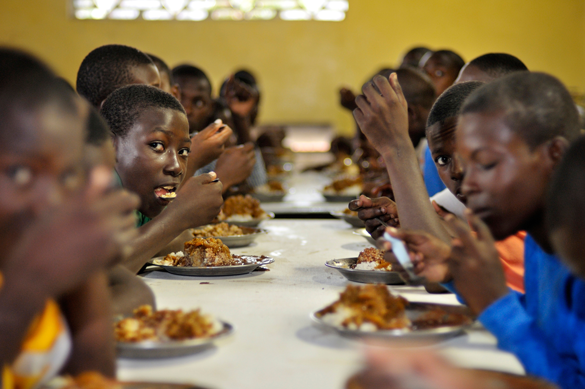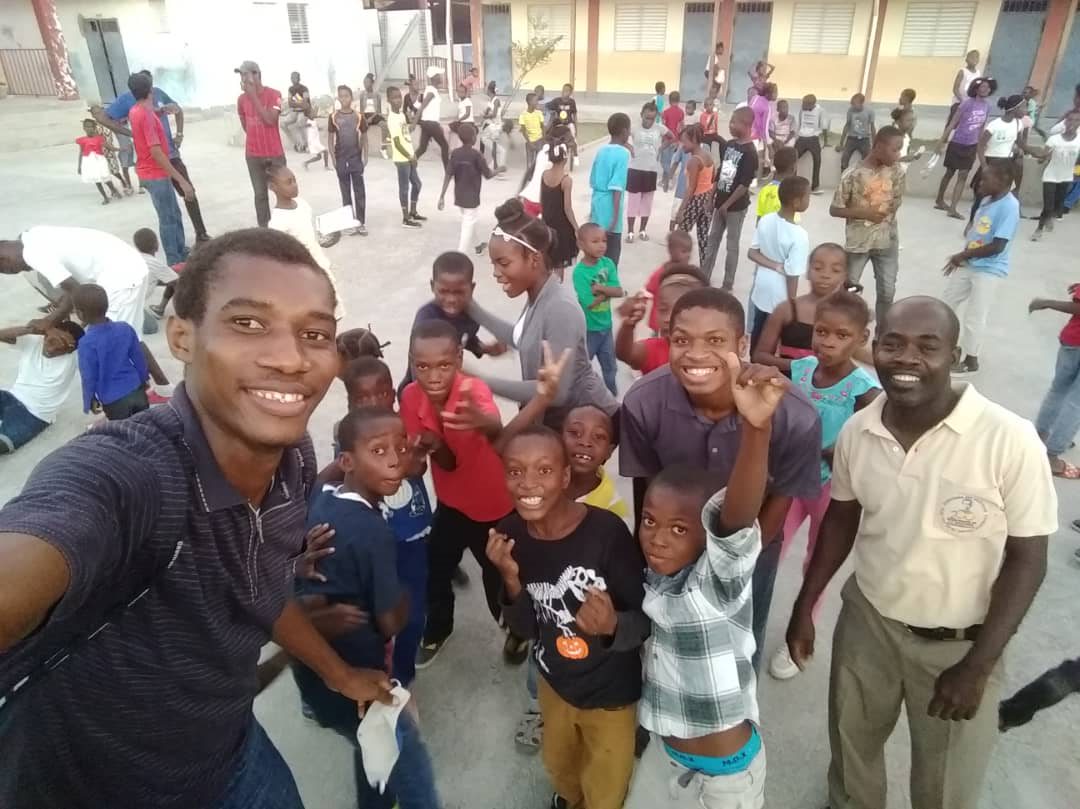HAITI FIVE YEARS LATER: Salesians Continue Making Progress Long After Attention Has Faded

(MissionNewswire) In the initial aftermath of the devastating earthquake that struck Haiti on Jan. 12, 2010, the Salesians were instrumental in emergency response and relief efforts. An integral part of the infrastructure in Haiti prior to the earthquake, they were among the first responders—providing shelter and medical aid; means to securely transport, store and distribute relief supplies and clean drinking water; and, perhaps most importantly, an understanding of how to get things done in Haiti. Having served Haiti for nearly 75 years, the Salesians were not outsiders rushing in to help—they were already beloved members of the community.
Salesian Missions, the U.S. development arm of the Salesians of Don Bosco, have been working for years to bring attention to the plight of the Haitian people, and so many others in the world. Almost exactly a year prior to the tragedy, Salesian Missions sent a team to Haiti to document the programs and the immense need for assistance. The videos, photos and information were utilized to tell the stories of people in need in countries around the globe and the Salesians’ dedication to helping them. In Haiti, they were truly making a difference under the most challenging of circumstances.
Nothing could have prepared the Salesians—or the Haitian people—for the massive devastation and heartbreaking loss that occurred on Jan. 12, 2010.
The world was finally paying attention to Haiti.
Soon after the earthquake struck, the Salesians pledged to continue working long after the cameras and reporters were gone (the latter, unfortunately, left sooner than anyone could have envisioned). The Salesians remained working in Haiti, not just long after the press, but in many cases long after other humanitarian organizations. While other organizations are set up to come in and help with a disaster (and then inevitably leave), the Salesians have been and will continue to be an integral part of the infrastructure in Haiti and in so many other needy places around the globe.
Many of the challenges facing the people (especially the youth) of Haiti, existed long before the disaster struck. Many were homeless. Children were hungry. Conditions were crowded. Water was in short supply. The earthquake added to the misery of thousands, including children who, despite the desperate circumstances, found their way to schools each and every day, with a hunger for knowledge that outweighed the hunger in their stomachs.
These schools are some of the many Salesian-run institutions in Port-au-Prince and around the country. In some cases, students even call the schools home. In addition to elementary schools, secondary schools, vocational training institutes and colleges, the Salesians provide shelter for homeless youth and programs for street children. At every program serving youth in Haiti, students not only receive educational opportunities and the support of caring adults, they also receive a nutritious meal daily. One Salesian kitchen in Cité Soleil alone baked 20,000 rolls of bread a day to feed hungry children in the most impoverished area of the nation’s capital.
As the lights on Haiti dimmed, the Salesians shifted from disaster mode to recovery and rebuilding mode—quietly, without attention, as they always have done. It has been five years since the earthquake struck, and much still needs to be accomplished. But progress is steady, and the Salesians are proud to report some of the specifics of their accomplishments:
- Salesian Missions has a growing, ongoing partnership with Stop Hunger Now, which includes delivering nutritional meals to those in need in Haiti.
- Salesian educators from Brazil brought new sports programs to Haiti.
-
A recent donation from SoapBox Soaps, coordinated by Salesian Missions, more than 10,000 bars of soap will make their way into the hands of children and families in need in Haiti. The spread of cholera in the country in the years following a massive earthquake has added to the devastation.
-
Salesian missionaries secured financial support from Mercedes-Benz for their “Food for Haiti” project which is designed to meet the nutritional needs of children affected by the earthquake. Currently, the project is improving the nutrition of 135 children aged 3 to 9 who live in La Saline and Cité Soleil, the two largest slums in Haiti’s capital city, Port-au-Prince.
- Ongoing professional development has helped rebuild Salesian educational centers throughout the country:
- Salesian “Little Schools” are making a big difference. More than 20,000 children receive education and food daily in the Little Schools of Father Bohnen —“Oeuvre des Petites Ecoles de Père Bohnen” — or OPEPB in French.
- Street children in Port-au-Prince are cared for in a rebuilt Lakay House for Street Children.
An estimated 1,000 children study in the Salesian education center in Gressier.- Nearly 800 children and young people go to the Timkatec school in Pétion-Ville, many of them former homeless street children.
- An estimated 340 young people are currently training in agricultural schools and vocational training centers in Cap-Haïtien.
- The vocational training center at ENAM re-opened its doors a little over a year after the earthquake. ENAM is the National Academy of Arts campus, where nearly every building collapsed during the quake. On Jan. 12, 2010, more than 200 students were buried in the rubble of the renowned school known for serving Haiti’s “best and brightest.” Also killed were teachers, staff and an 85-year-old Haitian-born Salesian brother.
- The Salesian-run trade school a Lakay (that teaches street youth carpentry, cabinetry, electrical and tailoring skills) — has a new building that is able to accommodate 200 students.
- In Fort- Liberté, the Don Bosco Technical School accommodates 2,000 youth, preparing them for jobs through traditional and professional training courses in the areas identified as most in need — including hydraulics, masonry, cabinet making, tailoring and administrative work. An estimated 160 young adults will soon become nurses through the Salesian nursing school (one of the only schools of its kind in the country). The new technical school — along with the restoration of the damaged areas of Don Bosco Polytechnic—is part of a collaboration with the Caracol Industrial Park. This industrial park is expected to be one of the largest in the Caribbean, according to the Inter-American Development Bank.
- The Salesian University Network installed and connected computers at 13 Salesian educational centers across the country. Hundreds of university students had a chance to continue their education when they were unable to return to school following the Jan. 12, 2011, earthquake. Since then, the computer labs and cybercafés have been instrumental in the education and empowerment of thousands of vulnerable youth in Haiti.
###
Photo by Florian Kopp – Copyright : © imageBROKER / Alamy
Sources:




